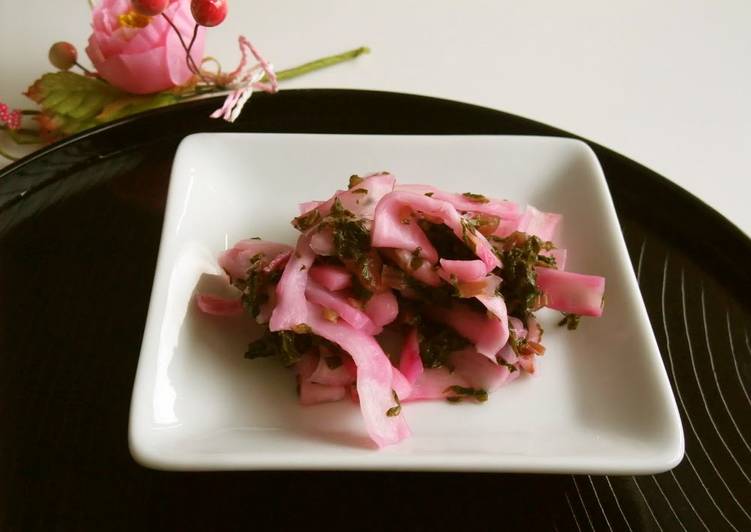Pickled Sakura and Japanese Turnips. Today I'm sharing Asazuke, a type of Tsukemono. Asazuke literary means 'shallow pickling' for its short period of pickling time. Asazuke is commonly prepared at home because it's easier and simple to make as opposed to Tsukemono, which takes more effort to prepare and longer waiting period.
According to all people, cooking is indeed things which is quite easy. Besides they are indeed like cooking and have will cooking that is quite, they are also smart in processing each dish so that it becomes food luscious. But there are those who cannot be able to cook, so they must learn and see recipes that are easy to follow.
 It is said that the taste varies according to each household.
Great recipe for Pickled Sakura and Japanese Turnips.
Japanese long-rooted pickling turnips are in season around late fall to winter, and where I'm from, they are pickled in every household.
It is said that the taste varies according to each household.
Great recipe for Pickled Sakura and Japanese Turnips.
Japanese long-rooted pickling turnips are in season around late fall to winter, and where I'm from, they are pickled in every household.
You can cook Pickled Sakura and Japanese Turnips use 9 ingredients and 7 the steps. Here guides how you mix it.
The main ingredient Pickled Sakura and Japanese Turnips as follows:
- You need 5 of Japanese long-rooted pickling turnip.
- Provide 1 tsp of Salt.
- Provide 1 tbsp of Salt (for the leaves).
- Provide 1 liter of Boiling water.
- Prepare of Sauce for macerating.
- You need 1 tbsp of Vinegar.
- You need 1 tbsp of Sugar.
- Provide 1 tsp of Salt.
- Prepare 3 grams of Dashi stock granules.
It is said that the taste varies according to each household. Before I got married, my health-minded. Add a few slices of ginger to them. Pack with the turnips just out of the boiling water.
Steps Pickled Sakura and Japanese Turnips
- These long-rooted Japanese turnips have a pretty red and white contrast. Wash both the roots and leaves clean..
- Cut the roots into 4-cm long, 2-mm thick strips, slice into sticks, place into a bowl, then coat in 1 teaspoon salt, and let sit for 30 minutes..
- Add boiling water to the roots in the bowl, quickly drain in a sieve, place into a cold water bath, then drain the water..
- Finely mince the leaves (use only the inner leaves that are in good condition). Work in 1 tablespoon salt until the leaves produce a black liquid..
- Place the leaves into a sieve, place into a hot water bath, and rinse until it stops coloring the water. Tightly wring out, and drain the water..
- Lightly wring out the softened roots..
- Immediately place the roots and leaves into a pickling container, add the pickling liquid, and mix. Place a light weight on top. It is ready to eat it from the next day or so..
The turnips should have a little crunch left in them after they are opened. What to buy: Kombu is a broad, thick form of seaweed that is an essential ingredient in dashi, a Japanese broth. It can be found in Asian markets and online. It's hard to get people excited about turnips. But on a recent trip to the Middle East, one of the things I loved most about the generous spreads of salads, roasted meats, and creamy-white cheeses that were a part of just about every meal, were the pickles - including pickled turnips, which were served even at breakfast.